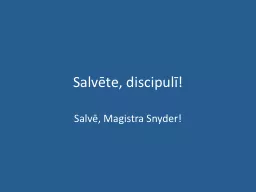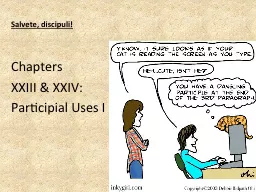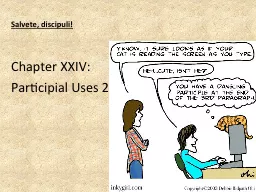PPT-Salvēte , discipulī !
Author : pattyhope | Published Date : 2020-06-22
Salvē Magistra Snyder LATIN LAB Monday Wednesday Thursday 245315 ROOM 101 CONTACT INFO EMAIL jsnyderbrooklynlatinorg for questions parent contact ONLINE wwwmagistrasnyderweeblycom
Presentation Embed Code
Download Presentation
Download Presentation The PPT/PDF document "Salvēte , discipulī !" is the property of its rightful owner. Permission is granted to download and print the materials on this website for personal, non-commercial use only, and to display it on your personal computer provided you do not modify the materials and that you retain all copyright notices contained in the materials. By downloading content from our website, you accept the terms of this agreement.
Salvēte , discipulī !: Transcript
Download Rules Of Document
"Salvēte , discipulī !"The content belongs to its owner. You may download and print it for personal use, without modification, and keep all copyright notices. By downloading, you agree to these terms.
Related Documents





